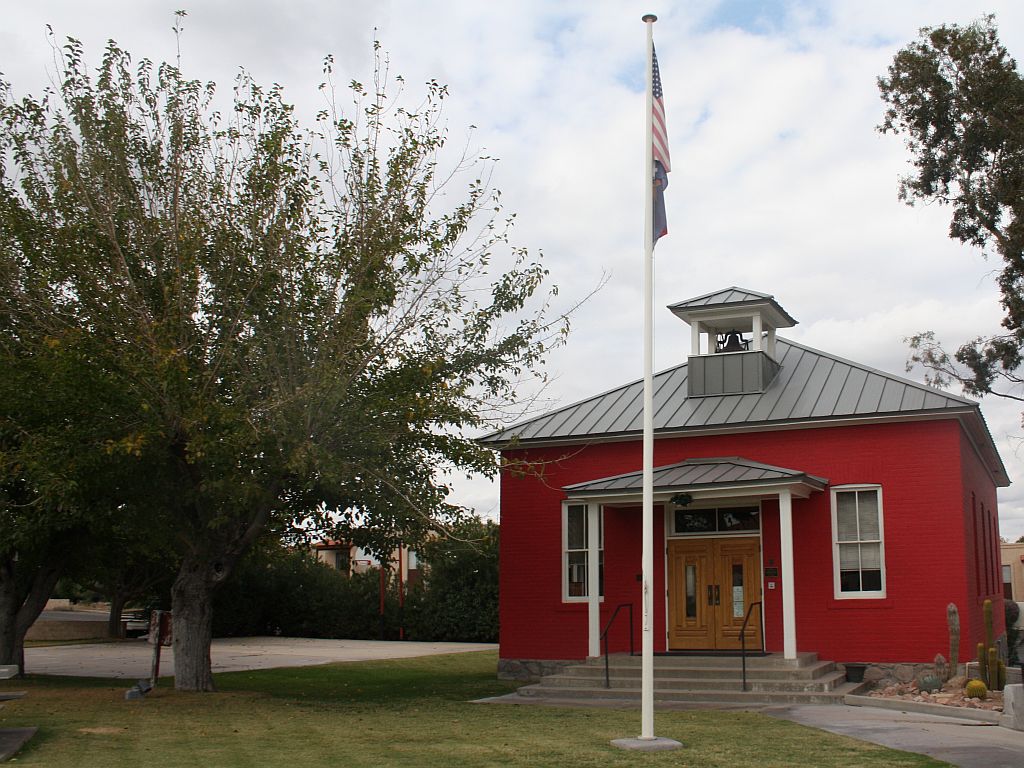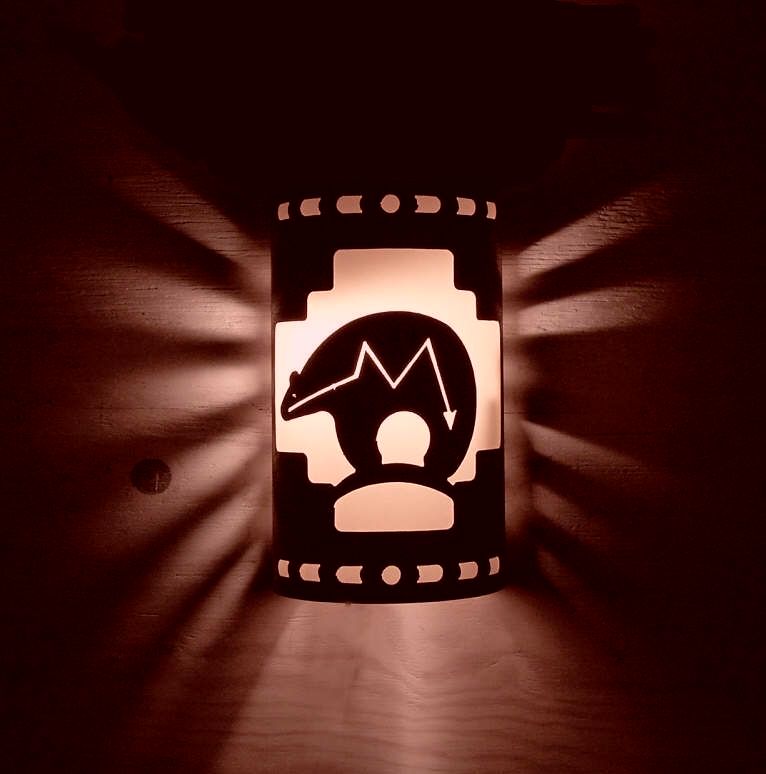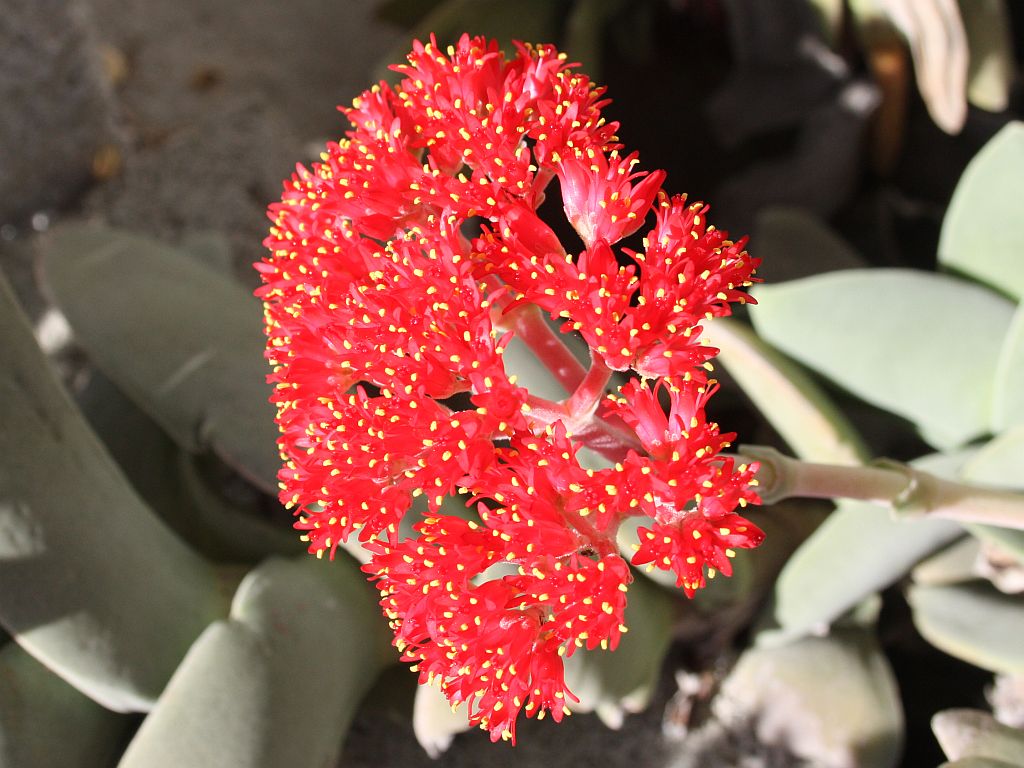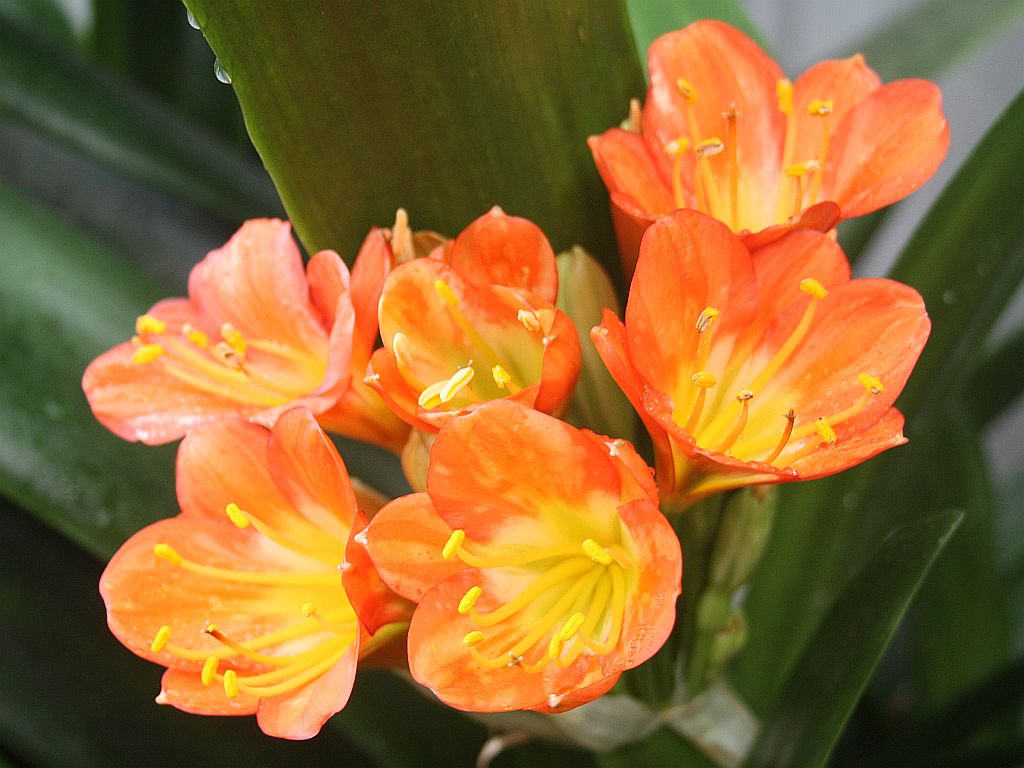November 2010
Garcia Little Red School House
 This is Wickenburg’s historic Little Red School House on North Tegner Street. The Wickenburg Children’s Cultural Organization uses it for musical events and community cultural activities. It is a national historic monument.
This is Wickenburg’s historic Little Red School House on North Tegner Street. The Wickenburg Children’s Cultural Organization uses it for musical events and community cultural activities. It is a national historic monument.
This building, originally built at the Vulture Mine, was moved the 25 mile distance to its present location in about 1895 at a cost of $50.00. You can read about Ynagcio Garcia for whom the school house is named and the rest of the history at the Wickenburg Unified School District website.
Click on the image to enlarge.
Crassula Falcata a.k.a. Propeller Plant
It’s also called Scarlet Paintbrush. I photographed this in late October, nearly a month after blooming season for this plant should have been over. Click on the image to enlarge.
More about this succulent:
Description: low growing shrub, easy to grow.
Stem: Usually unbranched, succulent becoming woody with age.
Roots: Fibrous.
Leaves: Interesting glaucous gray-green arranged in overlapping pairs, leaves are propeller shaped (sickle shaped).
Flowers: Spectacular clusters of tiny bright orange-red or scarlet-red florets arranged in dense cymes, that rise above foliage. Flower heads grow 4 to 6 inches wide and have a pleasant scent.
Blooming season: Flowers starts to develop in June and are in full bloom in August. The flowers open slowly and last for nearly a month when in full bloom.
Kaffir Lilies
After an overnight rainfall, I took this photo of the Kaffir lilies in bloom on the patio.
More about Kaffir Lilies from Denver Plants:
Kaffir Lily is an undemanding and an easy to grow indoor flowering house plant. Kaffir Lilies are slow growers that eventually will become quite large. Flowers are most common in late winter to early spring. All parts of Clivia miniata are somewhat poisonous and may cause mild upset stomach if ingested. Not a good choice for folks who own house cats. Sap from the plants leaves or roots may irritate sensitive skin.
Kaffir Lilies are grown outdoors in temperate areas in the shade. As an indoor flowering house plant place them in any well lit location. Full sun is to strong… so don’t place them to near a south window. Water when the soil has dried about 1″ from the surface.
Rainy Day Schedule
 Verna and I woke up to a rainy, drizzly day this morning. We decided to just stay indoors and watch some of the college football games.
Verna and I woke up to a rainy, drizzly day this morning. We decided to just stay indoors and watch some of the college football games.
This afternoon, Verna made a special comfort food dinner for us – spinach enchiladas with Tex-Mex rice and pinto beans. Man were those yummy! She uses two kinds of cheese in her green sauce that tops the enchiladas. She made enough that we can have enchiladas for lunch during Thanksgiving week.
We will do our usual thing on Saturday night by watching football, Cops, America’s Most Wanted followed by a DVD movie. Some rainy days aren’t bad at all!
Dark Sky
 Several years ago, I visited Kitt Peak National Observatory near Tucson, AZ. Some friends and I took the guided tour that brought us into several of the telescope domes on the mountain. One statement the tour guide made stuck in my memory. He said “We get more light pollution from Phoenix than we do from Tucson which is less than half the distance from the observatory.”
Several years ago, I visited Kitt Peak National Observatory near Tucson, AZ. Some friends and I took the guided tour that brought us into several of the telescope domes on the mountain. One statement the tour guide made stuck in my memory. He said “We get more light pollution from Phoenix than we do from Tucson which is less than half the distance from the observatory.”
Tuscon, which is home to the main campus of the University of Arizona (go Wildcats). The University does a lot of optical and astronomical research and was a main influence on Tucson’s Dark Sky Ordinance. Most of the Phoenix Metro cities do not have a dark sky ordinance. We can stand in the 18 wheeler lot after nightfall at our Wickenburg hotel and see the glowing dome of light pollution to the southeast.
The Town of Wickenburg is considering a dark sky ordinance. The ordinance isn’t yet in effect, so we don’t have to comply when selecting our outdoor fixtures, but we want to be compliant. The image above shows the light pattern that our compliant fixtures will deliver – no upward light.
We have two telescopes – serious ones – 10″ and 90 cm catadioptrics, but we don’t use them much because of the terrible seeing in Southern California. We want to be able to take them out on clear Arizona nights and be able to see the planets, stars, galaxies and nebulae without competition from our own lights.



